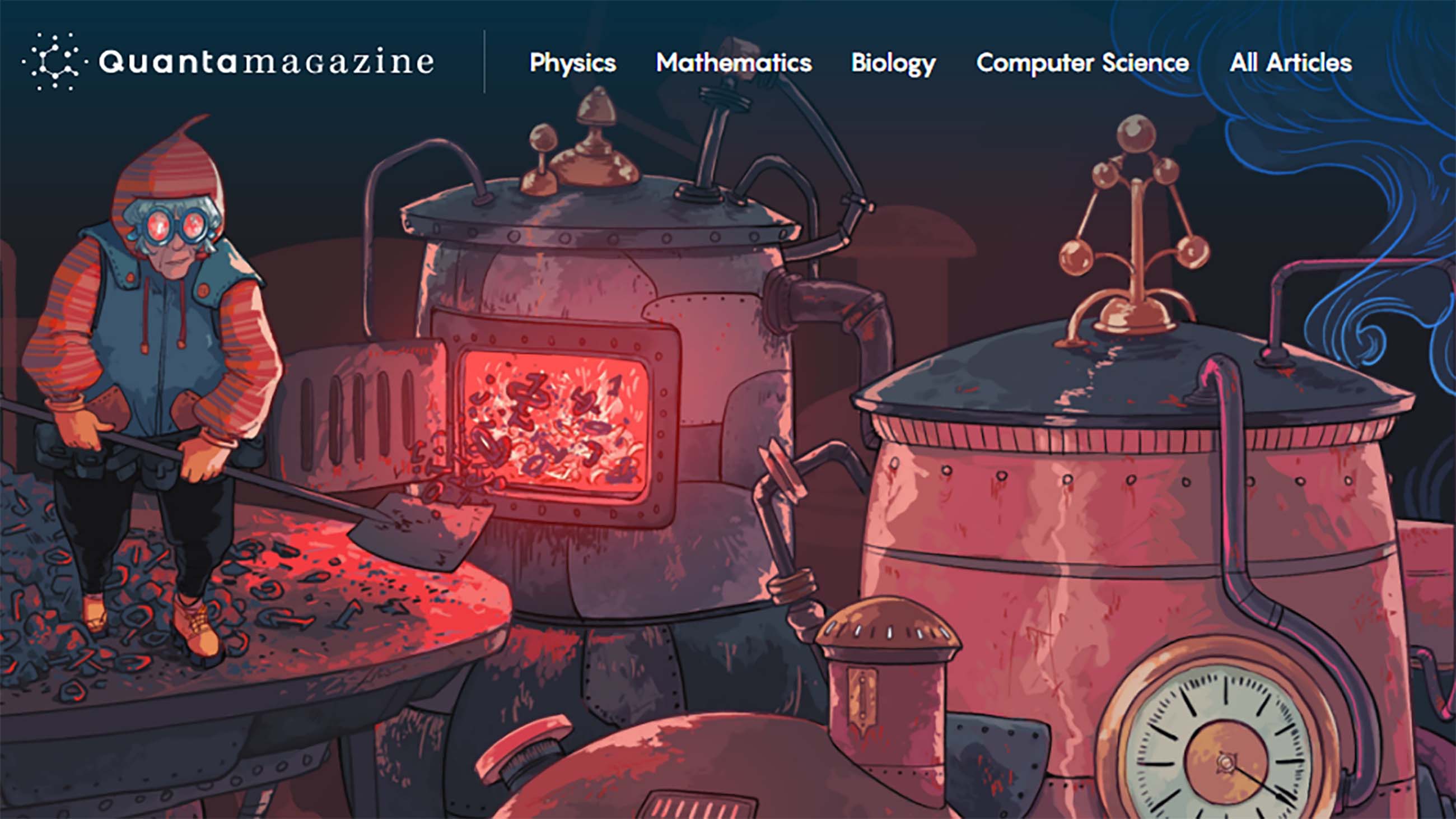Hard-Sciences Magazine Goes to the Next Level

This week, Quanta, a four-and-a-half-year-old online magazine highly regarded for its masterful coverage of complex topics in science and math (think matter-antimatter asymmetry, or the properties of prime numbers), relaunched its website with a new logo and look.
The site also recently hired John Rennie, former editor-in-chief of Scientific American, to direct Quanta’s basic biology coverage. That move, combined with the redesign, gives the publication a shot at becoming more widely recognized, and at stealing long-form attention away from mainstream publications.
Quanta’s formidable masthead also now includes deputy editor Michael Moyer, another Scientific American alum, and writers Natalie Wolchover, a former Popular Science scribe, and erstwhile Boston Globe columnist Kevin Hartnett.
The magazine, funded by the Simons Foundation, started publishing editorially independent work in late 2012 and took on the Quanta name the following year.
The editorial staff initially focused less on its platform and more on its product: well-crafted stories and other content that are rigorously reported, edited, fact-checked and copy-edited, says editor-in-chief Thomas Lin.
“We have an amazing art director [Olena Shmahalo] and graphics editor [Lucy Reading-Ikkanda] who also take great pains to make sure every pixel is in the right place in terms of explaining the science visually and also making it an inviting experience,” he says. “I think that is very much the culture that we have here, that I’ve tried to build up with the magazine. It’s not just with the magazine that you see, but also internally this kind of a culture of love for the work that hopefully shows through in the product itself.”
About a year ago, Lin initiated the ground-up redesign that, he says, would help the site look less like a blog and appeal to a broader range of readers.
Quanta came onto the U.S. media scene along with a handful of other new online science titles for the general public in the past four years. In the previous decade, few such publications had launched other than Inside Science, which started operations under a journalist in 2007. Media and publishing companies were contracting due to plummeting subscriptions and newsstand sales accompanied by shrinking advertising income. But foundations and professional societies eventually helped get some innovative efforts off the ground, including Aeon, bioGraphic, Hakai, Mosaic Science, Nautilus, Sapiens and this one, Undark. These sites frame science journalism in novel ways, including viewing it through a cultural, philosophical, or policy lens.
This latest crop of outlets did not categorically end a depressing period for science journalism, but they offered optimism for the field.
Rob Irion, former director of the Science Communication Program at UC Santa Cruz, calls Quanta a publication for über-geeks. But he adds: “The editors and writers do really well to make their explanatory chunks go down easily. Let’s put it this way: There are few outlets online that could go into the mathematics of [political] redistricting as palatably as Quanta.”
Indeed, Quanta’s enthusiasm for journalism that dives into big ideas in “hard” science, including theoretical computer science, is refreshing. Most consumer publications skim the surface of physics, computer science, and math if they go near them at all — though this was not always so. Jason Bardi, news director at the American Institute of Physics (AIP), which publishes Inside Science, says he recently came across a letter written to AIP in 1963 which implied that newspapers, including The Tulsa Tribune, The Worcester (Mass.) Telegram, and The Greensboro (N.C.) Daily News in that era employed reporters who covered physics. “This is a strange time in science journalism,” Bardi says.
Times are strange in general. Perhaps Quanta and its cousins can help to make our current world seem a little less peculiar — on multiple levels.
CORRECTIONS: A previous version of this post referred incorrectly to a problem in physics relating to the imbalance of matter and antimatter in the universe. It is known as matter-antimatter asymmetry, not matter-antimatter symmetry. Also, at the request of the editor of Quanta magazine, Thomas Lin, a link leading to his personal page at the website LinkedIn has been re-directed to his author page at Quanta.









